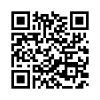KEEFEKTIFAN STRATEGI PENGAJARAN MEMBACA RESIPROKAL DAN STRATEGI BERPIKIR TERARAH DALAM PEMBELAJARAN PEMAHAMAN BACAAN PADA SISWA SMP
Abstract
Penelitian ini bertujuan untuk mengetahui (1) keefektifan strategi pengajaran membaca resiprokal dan strategi berpikir terarah dan (2) strategi yang paling efektif di antara strategi pengajaran membaca resiprokal, strategi berpikir terarah, dan strategi konvensional. Selain itu, penelitian ini juga bertujuan untuk mendeskripsikan (3) kendala yang dihadapi guru dalam menerapkan strategi pengajaran membaca resiprokal dan strategi berpikir terarah beserta solusi untuk mengatasi kendala. Penelitian ini merupakan metode penelitian kombinasi dengan model penelitian sequential explanatory design. Teknik pengambilan sampel menggunakan simple random sampling dan cluster random sampling. Teknik pengumpulan data yang digunakan adalah tes, wawancara, dan observasi. Teknik analisis data yang digunakan adalah uji analisis varians satu jalan yang dilanjutkan uji scheffe dengan taraf kesalahan 0,05. Penelitian kualitatif yang diterapkan adalah penelitian kualitatif deskriptif. Hasil penelitian menunjukkan sebagai berikut. (1) Strategi pengajaran membaca resiprokal lebih efektif daripada strategi konvensional; strategi berpikir terarah lebih efektif daripada strategi konvensional. (2) Strategi pengajaran membaca resiprokal paling efektif daripada strategi berpikir terarah dan strategi konvensional. (3) Kendala dalam penerapan strategi pengajaran membaca resiprokal antara lain beberapa siswa masih kesulitan dalam membuat prediksi, pertanyaan, mengklarifikasi, dan meringkas; kendala dalam penerapan strategi berpikir terarah antara lain beberapa siswa masih kesulitan dalam membuat prediksi, kesalahan teknis dalam membaca, dan membuktikan prediksi. Guru mengatasi kendala tersebut dengan memberikan motivasi, contoh, dan arahan kepada siswa.
Kata Kunci: strategi pengajaran membaca resiprokal, strategi berpikir terarah, pemahaman bacaan
THE EFFECTIVENESS OF THE RECIPROCAL TEACHING AND DRTA STRATEGIES IN THE LEARNING OF READING COMPREHENSION FOR STUDENTS OF JHSS
ABSTRACT
This study aimed to: 1) find out the effectiveness of the reciprocal teaching and DRTA strategies, (2) find out which strategy was the most effective among the reciprocal teaching, DRTA, and conventional strategies. In addition, this study aimed to (3) describe the constraints that the teacher faces in the application of the reciprocal teaching and DRTA strategies and the solutions to the constraints. This was a mixed methods study using the sequential explanatory design. The sample was selected by means of the simple random sampling technique and the cluster random sampling technique. The data were collected through tests, interviews, and observations. The data analysis technique was the one-way analysis of variance continued by the scheffe test at a significance level of 0.05. The qualitative study was the descriptive qualitative study. The results of the study are as follows. (1) The reciprocal teaching strategy is more effective than the conventional strategy; the DRTA strategy is more effective than the conventional strategy. (2) The reciprocal teaching strategy is the most effective than the DRTA strategy and conventional strategy. (3) The constraints in the application of the reciprocal teaching strategy are, among others, that the students still find it difficult to make predictions about questions, clarification, and summary; constraints in the application of the DRTA strategy are, among others, that the students still find it difficult to make predictions, there are technical mistakes in reading, and they find it difficult to prove predictions. The teacher deals with the constraints by giving motivation, examples, and directions to the students.
Keywords: reciprocal teaching strategy, DRTA strategy, reading comprehension
Full Text:
PDFReferences
Alfassi, Miriam. 1998. Reading for Meaning: The Efficacy of Reciprocal Teaching in Fostering Reading Comprehension in High School Students in Remedial Reading Classes. American Educational Research Journal, volume 35, II, hlm. 309-332.
Haggard, Martha R. 1988. Developing critical thinking with the directed reading-thinking activity. ProQuest, volume 41, VI, hlm. 526-533.
Harris, Albert J. & Sipay, Edward R. 1985. How to increase reading ability. New York: Longman Inc.
Kissner, Emily. 2006. Summarizing, paraphrasing, and retelling: skills for better reading, writing, and test tasking. Portsmouth: Heinemann.
Moon, Shannon S. 2011. Trying on reciprocal teaching: a novice’s struggle becomes a veteran’s success. ProQuest, volume 101, II, hlm. 97-100.
Nurgiyantoro, Burhan. 2011. Penilaian pembelajaran bahasa (Edisi Pertama). Yogyakarta: BPFE.
OECD. 2013. PISA 2012 results in focus. Diambil pada 15 Februari 2016 dari www.oecd.org.
OECD. 2013. PISA 2015 draft reading literacy framework. Diambil pada 15 Februari 2016 dari www.oecd.org.
Sarasti, Israel A. 2007. The effects of reciprocal comprehension-monitoring strategy on 3rd grade students reading comprehension. Disertasi diterbitkan Proquest. University of North Texas.
Shanahan, Timothy. 2005. The national reading panel report: practical advice for teachers. Naperville: Learning Point Associates.
Smith, Frank. 1988. Understanding reading. Hillsdale: Lawrence Earlbaum Associates, Inc.
Stricklin, Kelley. 2011. Hands-on reciprocal teaching: a comprehension technique. ProQuest, volume 64, VIII, hlm. 620-625.
Sugiyono. 2013. Metode penelitian kombinasi (mix methods). Bandung: Alfabeta.
Wiesendanger, Katherine D. 2001. Strategies for literacy education. Upper Saddle River : Merril Prentice Hall.
Yazdani, Mohammad Mehdi & Mojtaba Mohammadi. 2015. The explicit instruction of reading strategies: directed reading thinking activity vs. guided reading strategies. International Journal of Applied Linguistics & English Literature, volume 4, II, hlm. 53-60.
DOI: https://doi.org/10.21831/diksi.v25i2.18861
Refbacks
- There are currently no refbacks.
Jurnal Diksi is published by Faculty of Languages, Arts, and Culture, Universitas Negeri Yogyakarta. It is licensed under a Creative Commons Attribution-ShareAlike 4.0 International License. Based on a work at http://journal.uny.ac.id/index.php/diksi
Our Journal has been Indexed by:
Diksi Journal is published by the Faculty of Languages and Arts Universitas Negeri Yogyakarta in collaboration with Himpunan Sarjana Kesusasteraan Indonesia (HISKI)
Supervised by:





2.png)










